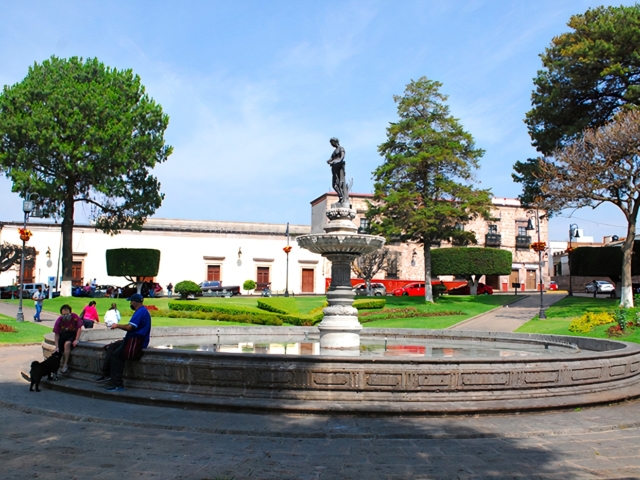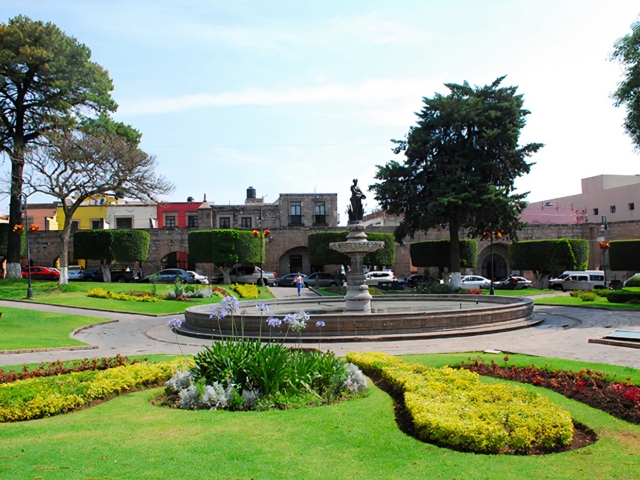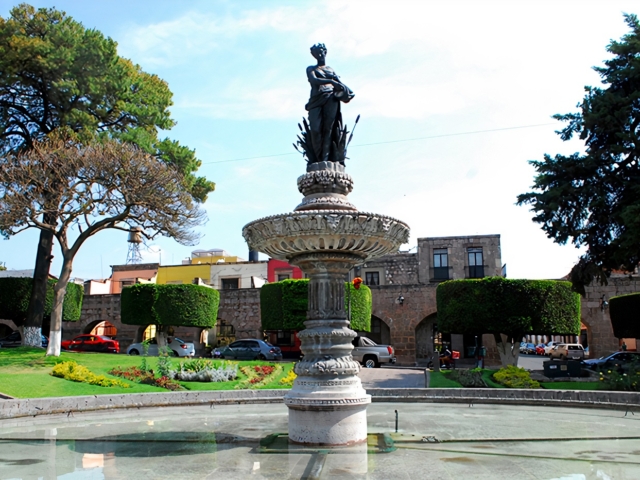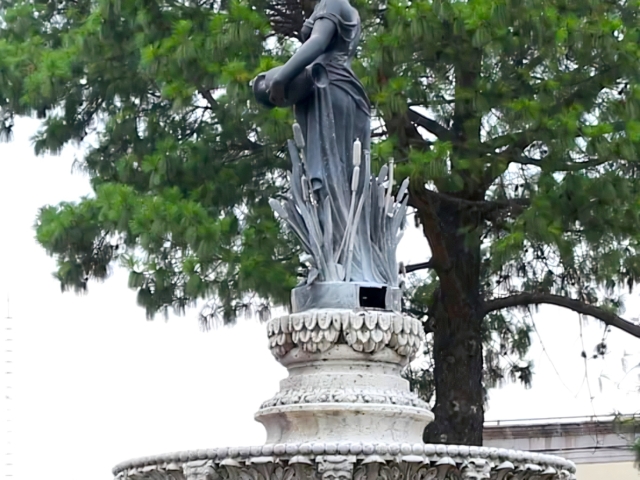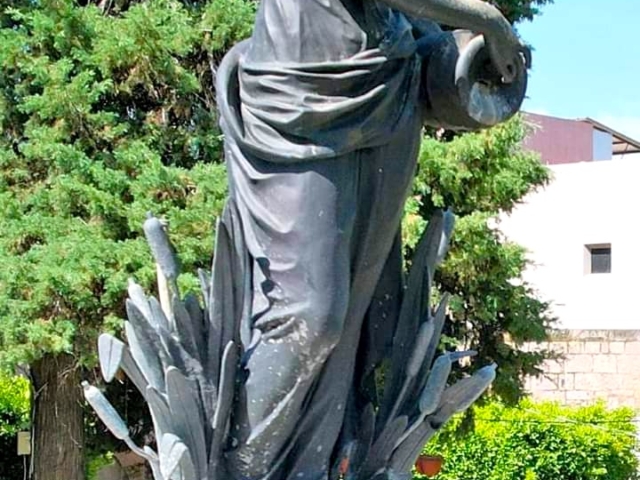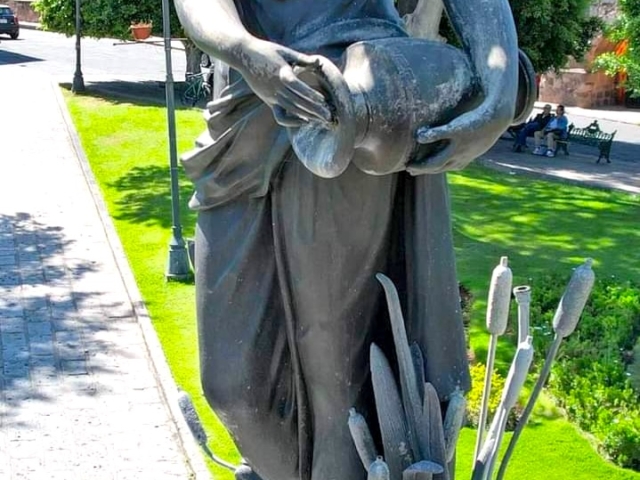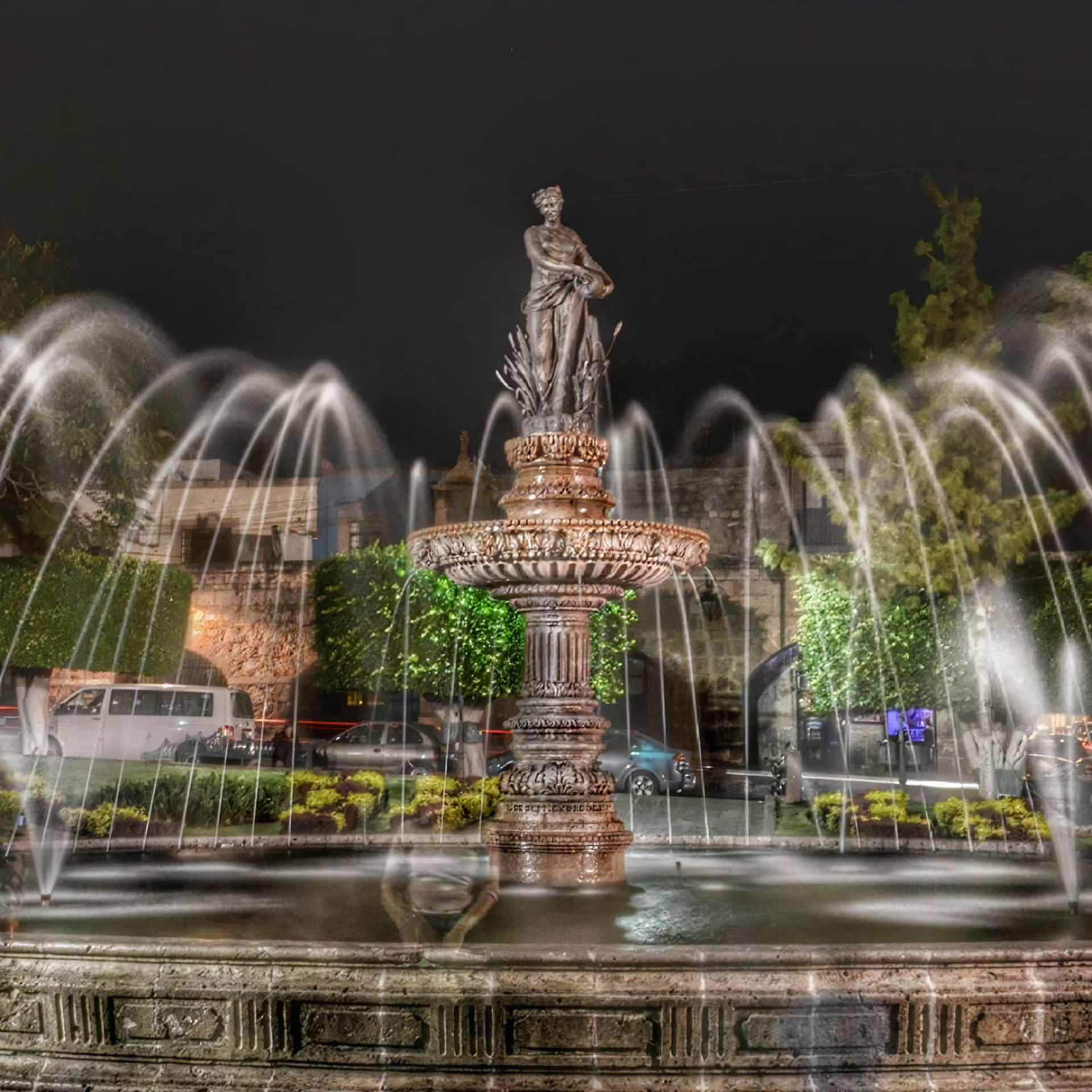
Adress
Aquiles Serdán S/N , esquina con Av. Madero Oriente, Centro, 58000, Morelia, Michoacán, México.
GPS
19.703253591317, -101.18274092674
KNOW MORE PLACES
VISITA OTRAS LOCALIDADES
Various sources agree that the history of this garden square dates back to 1788, when Fray Antonio de San Miguel acquired the front part of the old Capilla de las Ánimas, which today has become the Temple of Lourdes. His aim was to create a public walking area with a large fountain with water. Due to its proximity to this religious centre, it was originally called “Plazuela de las Ánimas” or “Plaza de las Ánimas”.
“This is one of the most representative spaces in Morelia, as it currently houses a fountain that represents the goddess Chloris, better known as Flora. Before this fountain was moved to the Villalongín garden, four fountains occupied each corner of this place, which is why for many years it was known as ‘The Garden of the Four Golds.’”
Various city historians give a special place to the monumental fountain that currently occupies the Villalongín Garden, pointing out that this is one of the oldest in the Michoacan capital because it was originally located in the city's Plaza de Armas, but around the year 1899, the administration of General Mariano Jiménez ordered that it be moved to its new location and receive the sculpture of the mythological goddess of flowers and gardens.
The history of this public space intersected with the character of Don Manuel Villalongín y Navarro when the old Capilla de las Ánimas was closed to turn its interior into a women's prison and there his wife was arrested by the Spanish authorities. The insurgent's response became the episode for which he is most remembered to this day.
Although various sources differ on how this event occurred, it is noted that Villalongín reacted against what was expected by both his companions and the enemy and, instead of surrendering to ensure the safety of his wife, he entered the city with a small group of men and managed to free her.
The figure of Villalongín achieved wide popularity for the daring raid he made on Valladolid to rescue his wife who had been arrested and imprisoned in the prison on the orders of the military commander Torcuato Trujillo, an episode that was preserved in the collective memory with a connotation of love and heroism.
The site is named after the insurgent Don Manuel Villalongín, a prominent figure in this national historical period for his feat of rescuing his wife while she was being held prisoner by the royalist army in a chapel adapted as a women's prison. Originally during the colonial era, the garden was called ‘Plaza de Las Ánimas’.
The beauty of its design, which combines colonial and contemporary styles, makes it stand out as one of the most harmonious and favorite squares in the city for fans of night walks. This square also serves as a meeting point for groups of marchers who start their public demonstrations from this place towards Avenida Madero Poniente.
Today, the Villalongín Garden is not only the favorite setting for quinceañeras to take photos of their event, but also for couples who are about to get married and students arriving for their graduation day. From this point that already holds a beloved history of the Michoacan capital, the old fountain, the green areas and the quarry pieces mark the beginning of the center of Morelia.



